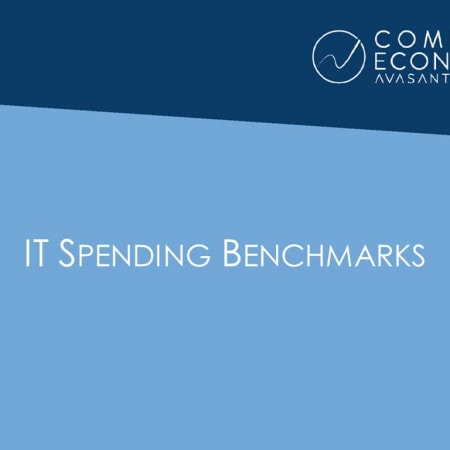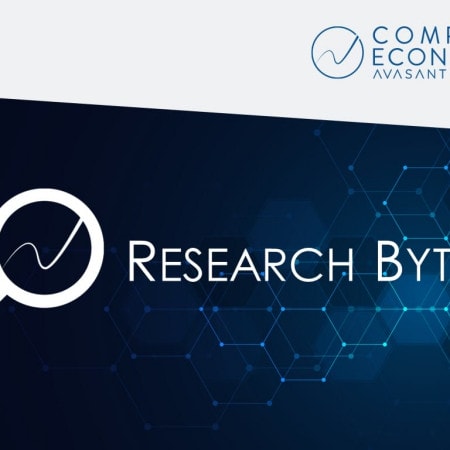-

Use of Contractor/Temporary Personnel DeciMark – 1991 to 2000 (Feb 2001)
The Use of Contractor/Temporary Personnel DeciMark provides the lower quartile, median, and upper quartile of contractor and temporary staff compared to the total staff in the information systems department. The data is presented for each sector or by organization size. The lower quartile (25th percentile) presents the lowest 25 percent of contractor/temporary personnel used by all of the organizations, where 25 percent used less than that amount. The median (50th percentile) is the level at which half of the organizations used less and the remainder used more. The upper quartile (75th percentile) presents the highest 25 percent of contractor/temporary personnel used by all of the organizations, where 25 percent used more than that amount. Results are presented for the period of 1991 to 2000.
May, 2002
-

Computing Power Trends by Platform and Sector TriMark – 1998 to 2000 (Feb 2001)
The Computing Power Trends by Platform TriMark shows changes in usage of various hardware platforms for the years from 1998 to 2000. The types of platforms include mainframes ($1 million or more), midrange systems ($100,000 to $999,999), LAN servers/superservers, and PCs/workstations. The Computing Power Trends by Platform TriMark is designed to provide IT executives with a comparison of changes in computing power by platform for the last three years.
May, 2002
-

Use of Contractor/Temporary Personnel TriMark – 1998 to 2000 (Feb 2001)
The Use of Contractor/Temporary Personnel TriMark provides the lower quartile, median, and upper quartile of contractor and temporary staff compared to the total staff in the information systems department. The data is presented for each sector or by organization size. The lower quartile (25th percentile) presents the lowest 25 percent of contractor/temporary personnel used by all of the organizations, where 25 percent used less than that amount. The median (50th percentile) is the level at which half of the organizations used less and the remainder used more. The upper quartile (75th percentile) presents the highest 25 percent of contractor/temporary personnel used by all of the organizations, where 25 percent used more than that amount. Results are presented for the period of 1998 to 2000.
May, 2002
-

Technology Acquisition Plans for the Next 12 Months: Organizations Planning to Make Acquisitions TriMark – 1998 to 2000 (Feb 2001)
Technology Acquisition Plans for the Next 12 Months: Organizations Planning to Make Acquisitions TriMark shows the percentage of organizations that intend to acquire technology within the next year. For each technology listed, the remaining percentage of sites does not plan to acquire that technology this year. Information is broken down by sector or organization size. Technology areas included are mainframes, midrange systems, LAN servers/superservers, desktop PCs, workstations, storage systems, network hardware, network software, database software, application software, ERP software, and e-commerce software. Results are presented for the period of 1998 to 2000.
May, 2002
-

Technology Acquisition Plans for the Next 12 Months: Organizations That May Acquire TriMark – 1998 to 2000 (Feb 2001)
Technology Acquisition Plans for the Next 12 Months: Organizations That May Acquire TriMark shows the percentage of organizations that may acquire technology within the next year but are not absolutely certain that they will acquire. For each technology listed, the remaining percentage of sites does not plan to acquire that technology this year. Information is broken down by sector or organization size. Technology areas included are mainframes, midrange systems, LAN servers/superservers, desktop PCs, workstations, storage systems, network hardware, network software, database software, application software, ERP software, and e-commerce software. Results are presented for the period of 1998 to 2000.
May, 2002
-

E-Business Practices by Sector and Organization Revenue TriMark – 1998 to 2000 (Feb 2001)
E-Business Practices TriMark provides the percentage of respondents in our study that have or utilize various e-business capabilities. Results are shown for each sector or size of organization. The e-business capabilities include having a website, engaging in Web-based business-to-business or business-to-consumer transactions, achieving profits on those e-commerce efforts, and outsourcing website functions. Other capabilities include EDI via the Internet, EDI via direct dial connections with suppliers, and EDI via direct dial connections with consumers. The following tables show data by industry sector and organization revenue. The TriMark results are presented for the period of 1998 to 2000.
May, 2002
-

Technology Implementation Status TriMark – 1998 to 2000 (Feb 2001)
The Technology Implementation Status TriMark shows the percentage of organizations researching, piloting, implementing, using, or not using various information technologies or e-business applications. These include Internet connectivity, e-commerce, mainframe consolidation, server consolidation, telecommuting, and ERP software. The following tables show data by industry sector, technology, and organization revenue. The TriMark results are presented for the period of 1998 to 2000.
May, 2002
-

Worldwide E-Business Technology Spending Projections 2002 to 2004 (May 2002)
Worldwide e-business technology spending, comprised of software and hardware that enables e-business processes, outside services to develop or provide e-business processes and applications, and in-house technology staff assigned to develop or provide e-business processes and applications is projected for 2002, 2003, and 2004.
May, 2002
-

Worldwide IT Spending Projections 2002 to 2004 (May 2002)
Worldwide IT spending, comprised of consumable supplies used by IT staff and departments, facilities used by and overhead associated with IT operations and staff, IT staff, outside services, and software and hardware is projected for 2002, 2003, and 2004.
May, 2002
-

Checklist for Reporting a Computer Crime
This article provides a checklist of practical steps to follow in the event that your systems are hacked or accessed by an unauthorized party. Actions include how to contact law enforcement, information to gather to assist in the investigation, and information to gather to determine damages. (2 pp.)
May, 2002
-

infoUSA Has Slight 1Q01 Dip (May 2002)
infoUSA reported substantial gains in net income and EPS in 1Q02. Revenue continued to suffer from the sluggish economy. First quarter 2002 EBITDA declined from the previous quarter of 2001, as the company's growth in revenues did not match its expense growth.
May, 2002
-

OSHA’s New Approach to Ergonomics (June 2002)
Even though the Congress squashed ergonomic requirements established when Bill Clinton was in office, ergonomics remains a critical issue. Furthermore, problems are likely to mount in the future, and within two decades the negative impact of poorly designed office furniture and information technology will result in considerable economic impact on individuals, corporations, the government, and ultimately the taxpayer.
May, 2002
-

E-Business Practices in 2002 (May 2002)
E-business practices are becoming rather widely adopted in most industry sectors according to the 13th annual Information Systems and E-Business Spending study conducted by Computer Economics. Virtually all of the organizations that participated in the 2002 study have web sites and large percentages of companies in every sector are using B2B or B2C applications.
May, 2002
-

2002 IS Budget Changes in Utility Companies
Utility companies have experienced shifts in their IS budgets in 2002 according to the 13th annual Information Systems and E-Business Spending study conducted by Computer Economics.
May, 2002
-

Outside Services and Personnel Costs as a Percent of Central IS Budget in 2002
Outside services is comprising a smaller percentage of the 2002 central IS budget in 2002, while personnel costs are comprising a higher percentage of the budget according to the 13th annual Information Systems and E-Business Spending study conducted by Computer Economics.
May, 2002

 Grid View
Grid View List View
List View